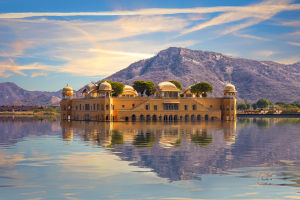Nestled within East Java, Indonesia, the Tengger Desert is an enigmatic expanse that surrounds the famous Bromo Tengger Semeru National Park.
While its name may suggest harsh, lifeless terrain, the desert is a vibrant canvas of volcanic ash, wind-carved formations, and spiritual heritage.
Trekking through this unique landscape promises more than just scenic beauty—it offers an experience shaped by tradition, nature, and resilience!
When to Go: Seasons, Temperatures, and Trail Conditions
The Tengger Desert experiences a relatively dry climate year-round, but timing your trek well is key to a safe and rewarding journey. The best months are from May to September when rainfall is minimal and skies are generally clear. Daytime temperatures range between 15°C to 25°C, but early mornings and late evenings can dip below 10°C, especially near the higher elevations.
Gearing Up: Essentials for the Journey
Preparation is everything when trekking through Tengger’s dramatic terrain. The sand and volcanic ash are deceptively challenging—soft underfoot, easily airborne, and rough on gear.
Must-have items include:
- Lightweight, breathable hiking boots with ankle support and strong grip.
- UV-protection sunglasses and a wide-brimmed hat to shield against intense sunlight.
- Dust mask or scarf to reduce inhalation of fine ash particles.
- Layered clothing for fluctuating temperatures.
- Ample hydration packs or insulated bottles.
- Trekking poles for stability in soft sand.
Routes Worth Exploring
The most iconic route in the region takes you across the whispering sands (Pasir Berbisik) toward the foot of Mount Bromo. This flat, open expanse offers panoramic views, especially at sunrise when light dances across the ridges.
For more adventurous souls, a multi-day trek that includes the savanna (Bukit Teletubbies) and climbs up to Mount Batok or even Mount Semeru (Java’s highest peak) introduces varying landscapes—from grassy hills to active volcanic cones. Each route has its own flavor, with the terrain shifting between soft dunes, rocky paths, and hardened lava fields.
Local Culture and Etiquette
The Tenggerese people, indigenous to this area, hold deep spiritual ties to the desert and surrounding mountains. The annual Yadnya Kasada festival is one of the region’s most remarkable events, where locals hike to Mount Bromo's crater to offer crops, livestock, and prayers.
While trekking, respect for sacred sites is paramount. Avoid littering, stay on marked trails, and be mindful when near temples or during ceremonies. Engaging with locals in Bahasa Indonesia, even if just a few words, often earns a warm smile and useful insights.
Wildlife and Flora
Despite its stark appearance, the Tengger Desert hosts a surprising range of life. At lower elevations, wild edelweiss flowers and alpine grasses create a surreal contrast to the blackened soil. Occasional sightings of Javan deer, civet cats, and hawks remind trekkers that this arid landscape still pulses with life. Bird watchers will find early mornings especially rewarding, as native species take flight along the cliffs and valleys.
Navigating Safely
Although the main paths are well-trodden, solo treks are not recommended without proper orientation. Hiring a local guide can enhance safety and add cultural depth to your journey. Many know hidden vantage points and can explain the folklore behind each ridge and dune. Ensure mobile phones are fully charged and carry a power bank, although signal reception may be limited in remote areas. Download offline maps before starting and inform someone of your intended route and return time.
Practical Tips for First-Timers
- Start your trek early to avoid heat and catch sunrise views.
- Avoid climbing crater rims during active volcanic alerts.
- Bring cash—local warungs and guides rarely accept digital payments.
- Pack snacks with high energy value like dried fruits, nuts, and local rice cakes.
Responsible Trekking: Leave No Trace
The beauty of Tengger lies in its raw, untouched atmosphere. To preserve this, all trekkers must carry out what they bring in. Avoid disturbing wildlife, do not remove stones or plants, and minimize use of plastic. Simple choices made by each hiker can keep the desert pristine for generations to come.
Trekking through the Tengger Desert is not merely a physical endeavor—it’s a spiritual and cultural passage. The play of wind across ash fields, the silhouette of sacred peaks at dawn, and the quiet power of local traditions all combine into a one-of-a-kind journey. With preparation, respect, and curiosity, the Tengger sands promise a trek that lingers in the memory long after the footprints fade!


